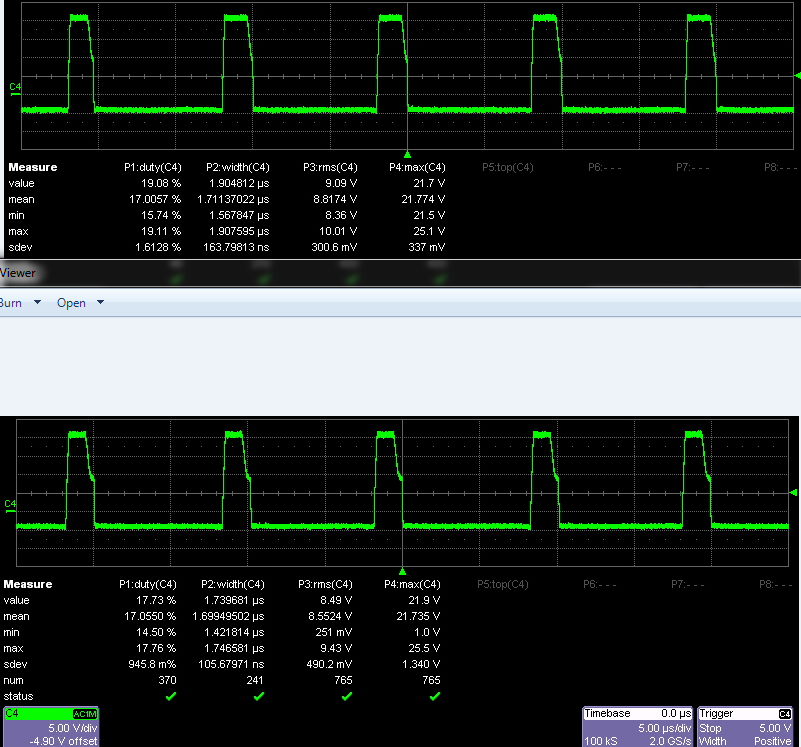Other Parts Discussed in Thread: DRV8844
Hello,
We use the DRV8840 to control a brushed motor without encoder feedback. If the motor does not reach the desired location in a set time the MCU generates an error. Because there is no motor feedback to control the speed we use a constant duty cycle to drive the motor. During development this approached worked well however we received some new DRV8840 parts with a different lot code that have different output characteristics. The output duty cycle is lower than previous lot codes and this causes the motor to move slower which generates a timing error. The datasheet doesn't discuss the tolerance of input duty cycle to output duty cycle. Is there a specification for this parameter? What is the recommended guidance for dealing with duty cycle tolerance?
Regards,
Michael




